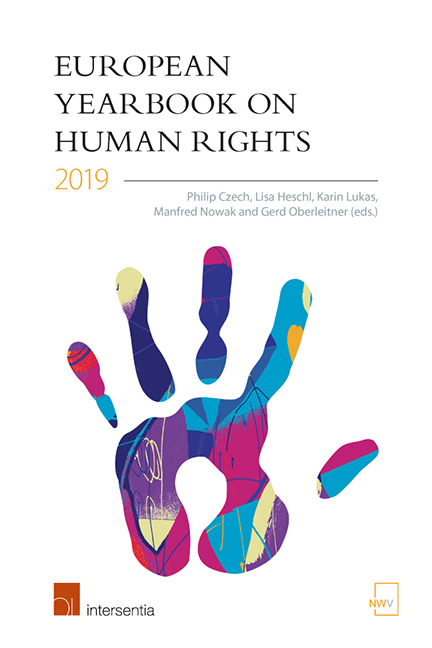Book contents
- Frontmatter
- Miscellaneous Frontmatter
- Editors’ Preface
- Contents
- List of Abbreviations
- List of Contributors
- PART I TOPIC OF THE YEAR
- PART II EU
- PART III CoE
- PART IV OSCE
- PART V REPORTS FROM THE FIELD
- PART VI OTHERS
- The Legal Authority and Recognition of the Universal Declaration of Human Rights: Conceptions, Developments and Practice
- Teaching Human Rights at School: A Survey of Persisting Challenges to the Practice
- Human Rights Implications for Vulnerable Migrants in Light of the EU and Italian Migration Policies
- The Russian Constitutional Court as a Mediating Link between Russian and European Law?
- PART VII BOOK REVIEWS
- Index
Human Rights Implications for Vulnerable Migrants in Light of the EU and Italian Migration Policies
from PART VI - OTHERS
Published online by Cambridge University Press: 24 January 2020
- Frontmatter
- Miscellaneous Frontmatter
- Editors’ Preface
- Contents
- List of Abbreviations
- List of Contributors
- PART I TOPIC OF THE YEAR
- PART II EU
- PART III CoE
- PART IV OSCE
- PART V REPORTS FROM THE FIELD
- PART VI OTHERS
- The Legal Authority and Recognition of the Universal Declaration of Human Rights: Conceptions, Developments and Practice
- Teaching Human Rights at School: A Survey of Persisting Challenges to the Practice
- Human Rights Implications for Vulnerable Migrants in Light of the EU and Italian Migration Policies
- The Russian Constitutional Court as a Mediating Link between Russian and European Law?
- PART VII BOOK REVIEWS
- Index
Summary
ABSTRACT
Migration has been at the top of the European political commitment and public discourse since the so-called ‘migrant crisis’ in 2014, and the following European Agenda on Migration put forward by the European Union (EU) Commission in 2015. In the EU agenda, migrants are neatly divided into three groups: regular, irregular and refugees (or in need of international protection). However, this might be in contrast with the reality of mixed migration flows which have most commonly characterised migration since 2007, with different groups of migrants who use the same routes and means to reach Europe intersecting the same conditions and ‘human status’. In the context thus described, EU and Italian policies go toward a radical division of migrants into categories, some of them to be deported and others to be protected. Moreover, the need for an early identification in order to separate refugees from irregular migrants seems to be one of the main points in the European strategy for combating irregular migration, smuggling and trafficking. The mixed flows have been studied as complex migratory movements where people involved are made more vulnerable by the conditions of their journey, where refugees, women and children are more likely to be trafficked or to be victims of severe forms of exploitation. In view of this, a broad categorisation of migrants does not reflect well the complex reality of migrants and provokes situations where vulnerable migrants are misidentified as irregulars, with the consequence of breaches in human rights. The aim of this contribution is to demonstrate the implication for human rights of vulnerable migrants following the implementation of EU policies, with a specific focus on migration policies in Italy where human rights standards were not always actively promoted by the last two governments.
INTRODUCTION
The large number of migrants who have arrived in Europe since 2014 has raised concern among Non-Governmental Organisations (NGOs) and human rights defenders for possible human rights violations within the management of the crisis by the receiving states and the EU. Political decisions and policies have directly and indirectly impacted the lives of thousands of people on the move, not only by impacting routes and means to reach Europe but also by increasing or decreasing possibilities of a safe journey and a safe stay in the destination country.
- Type
- Chapter
- Information
- European Yearbook on Human Rights 2019 , pp. 517 - 546Publisher: IntersentiaPrint publication year: 2019
- 1
- Cited by



